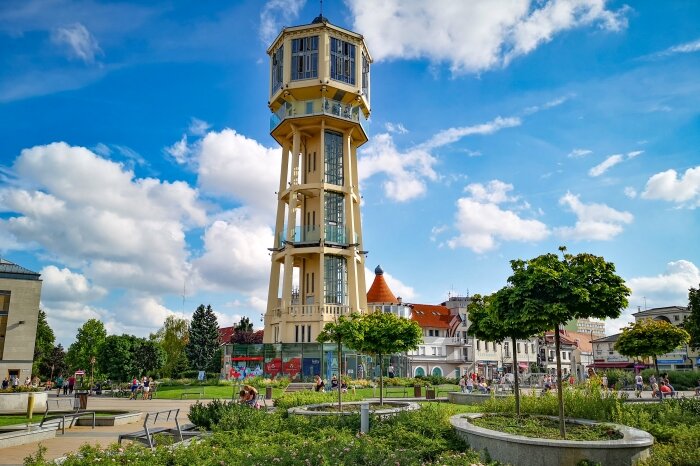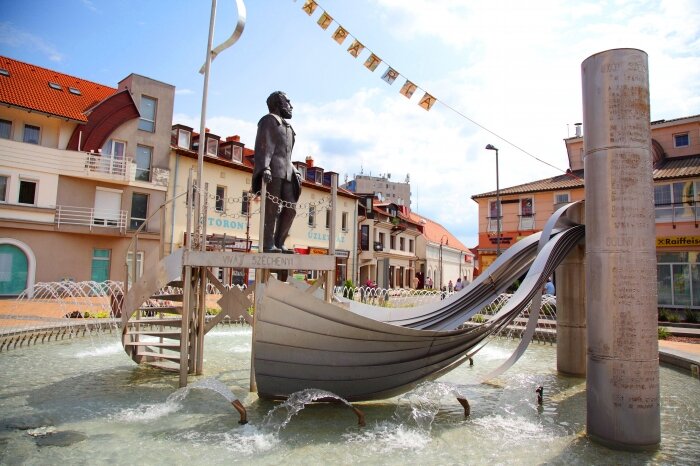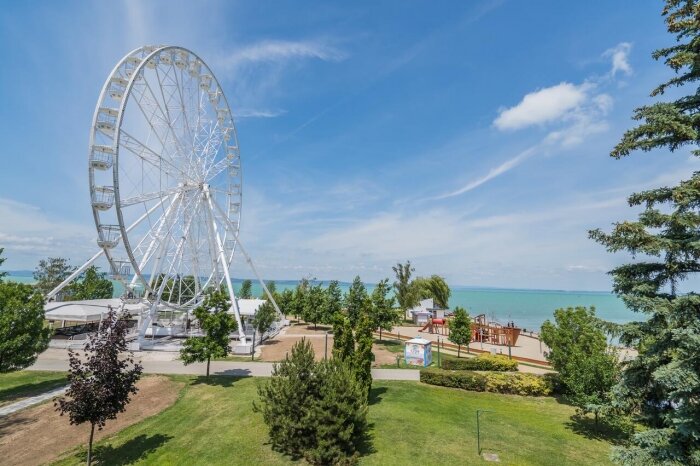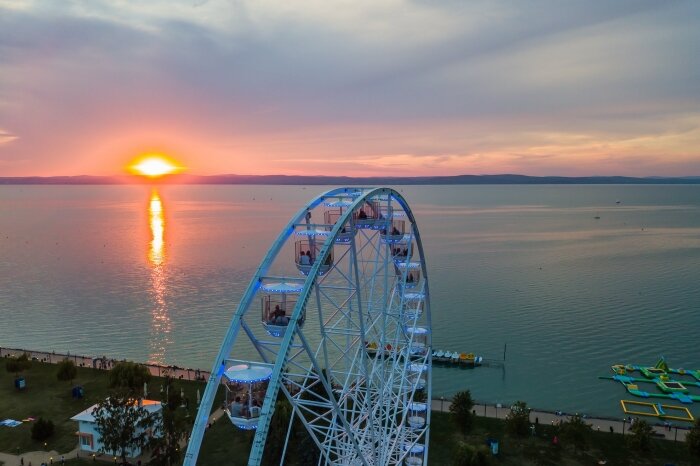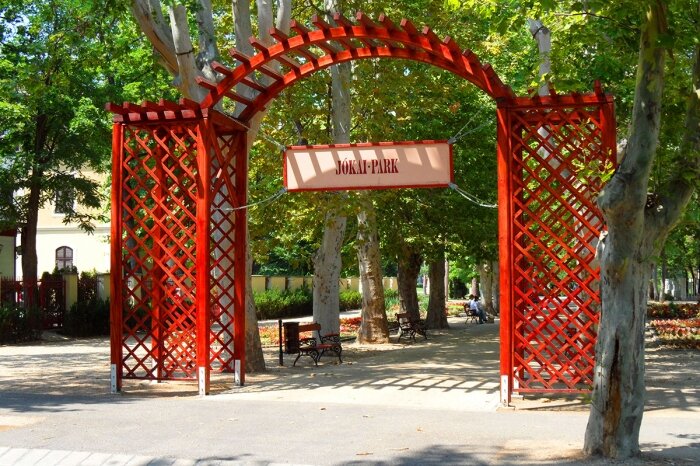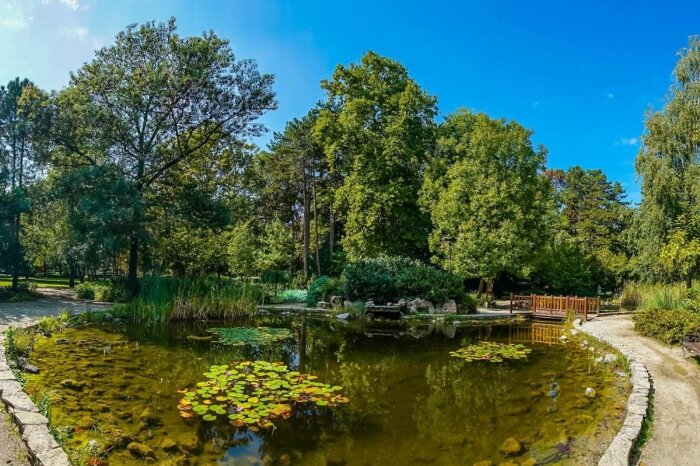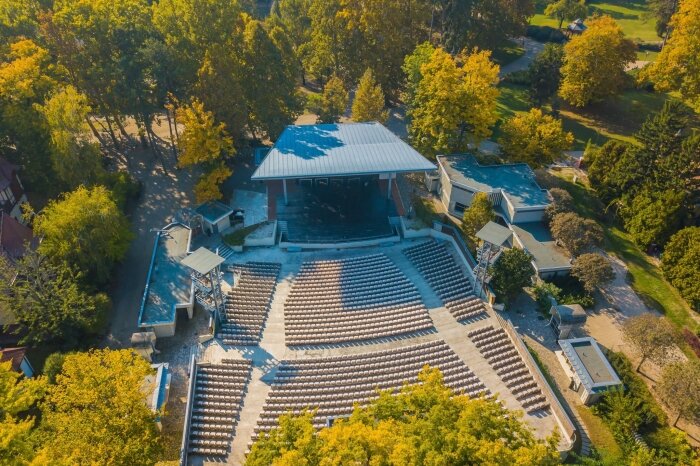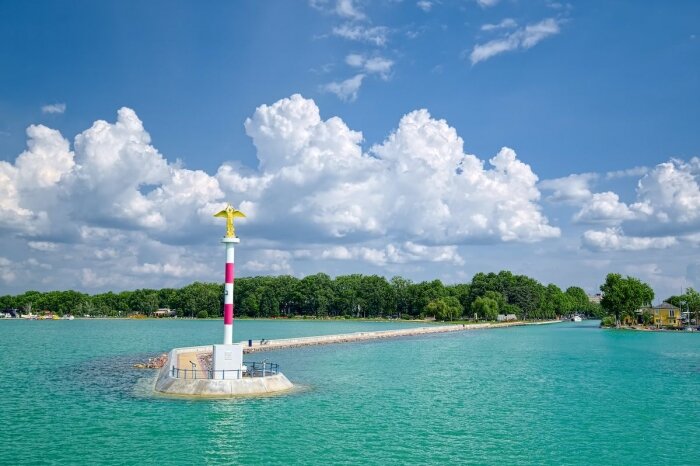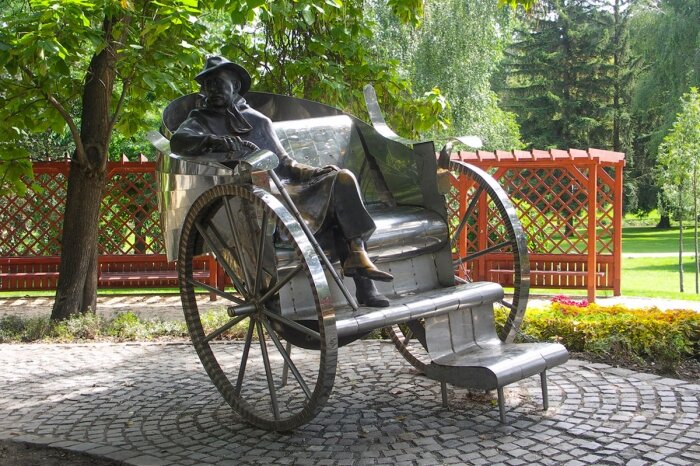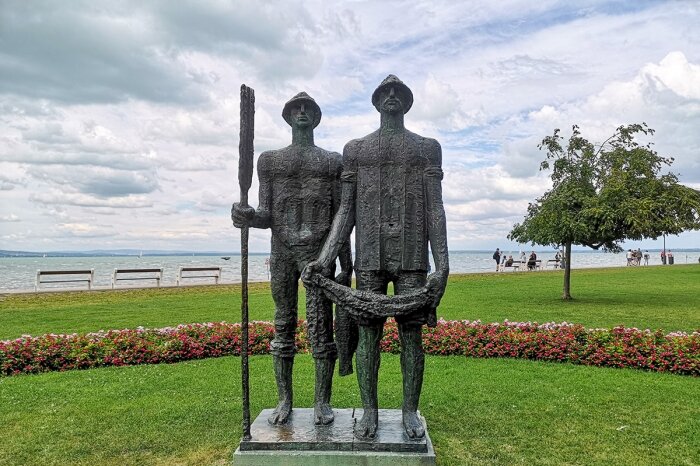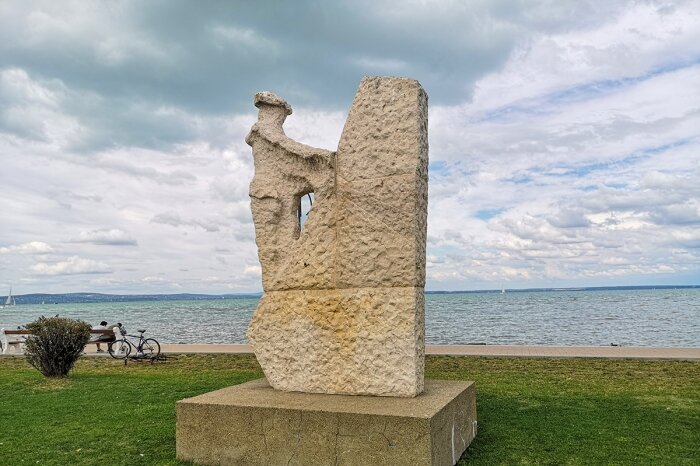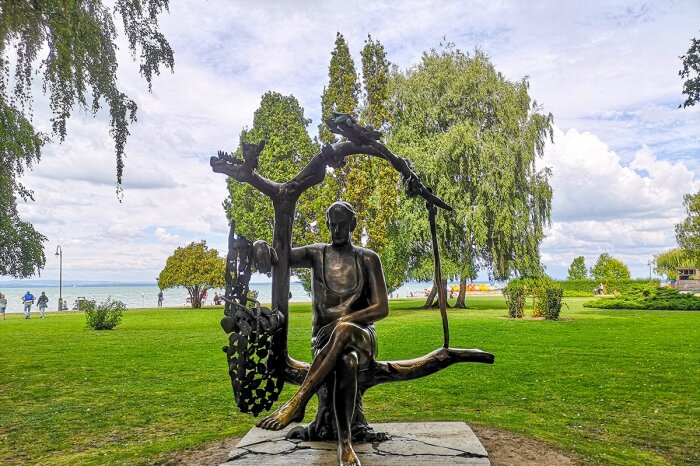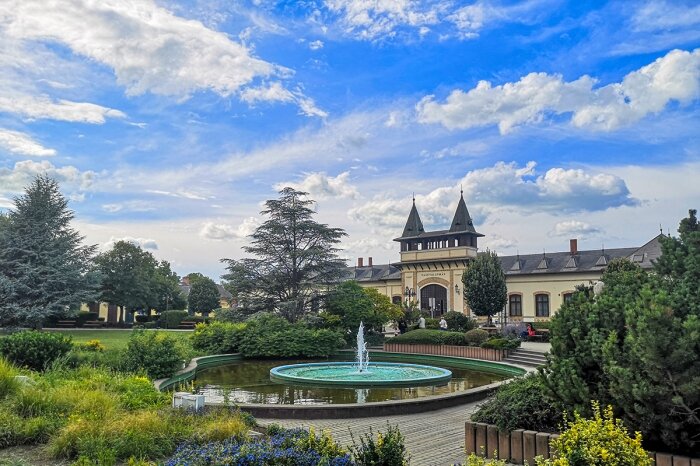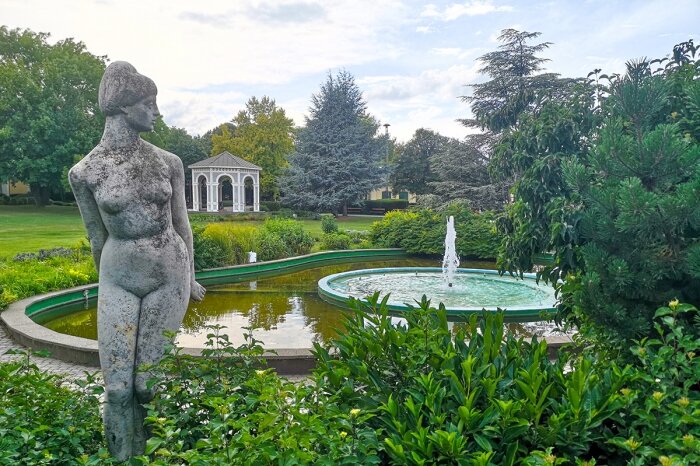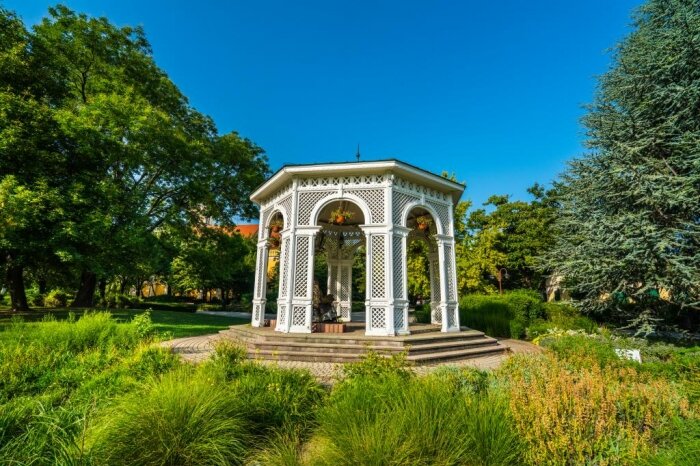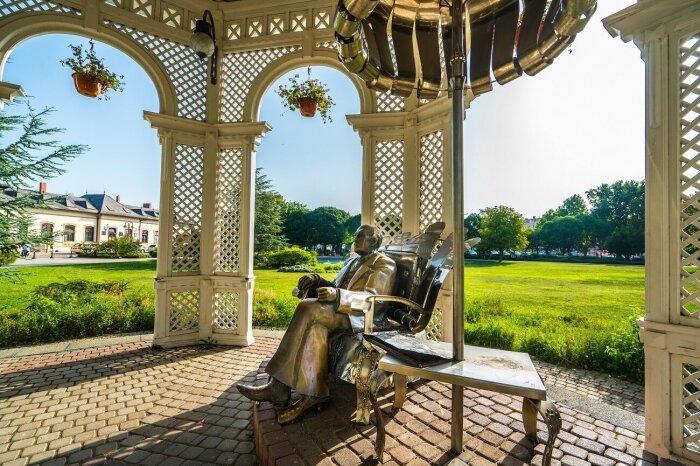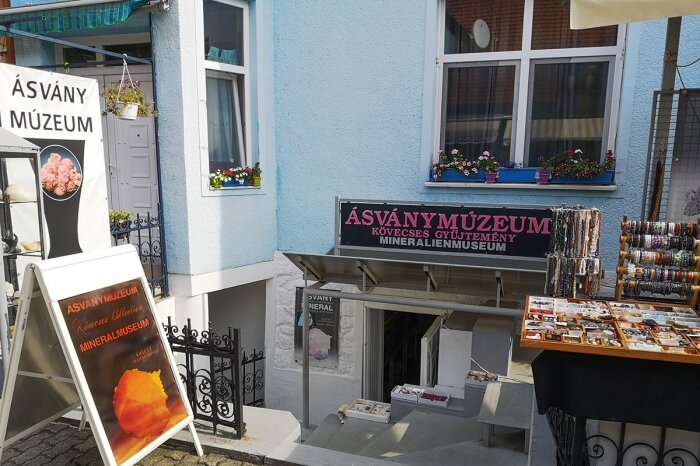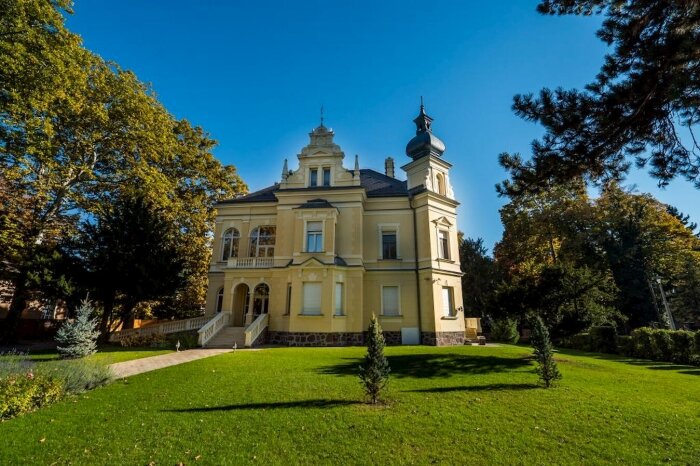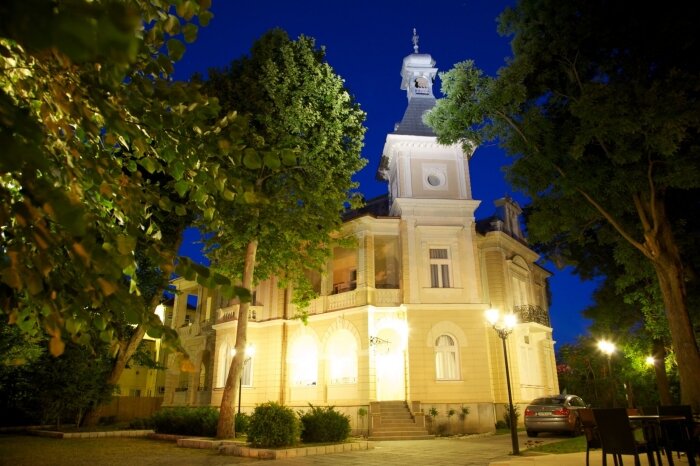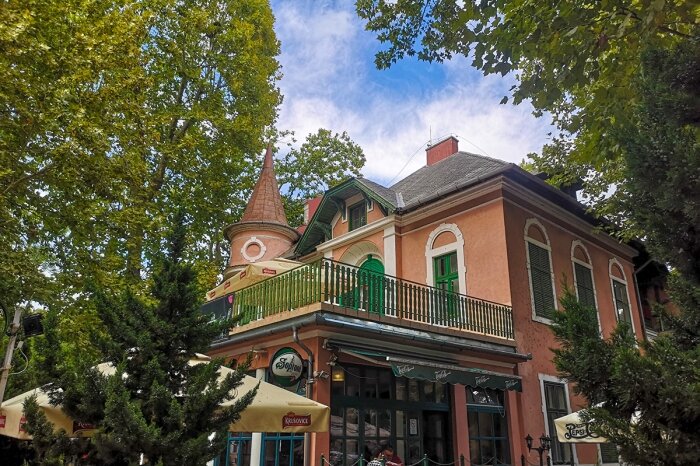Attractions in Siófok
Siófok is a constantly developing, busy city, one of the most popular holiday towns on the shores of Lake Balaton. In addition to the many program options, the city also offers numerous attractions.
Water tower
Considered the most emblematic building in the city, the Water Tower is a truly characteristic facility located in the center of the city on Freedom Square. The 45-meter-high tower also houses a bar, a lookout tower and an exhibition of international water towers. The 1912 facility has now retained only its shape, as its most extravagant lookout was created after its renovation in 2012. When you reach the top floor, you can enjoy the panorama of the surrounding areas sitting in one place, enjoying a coffee or a soft drink, as the lookout rotates 360 degrees.
Statue of Count István Széchenyi
A stylized chrome steel boat with a Széchenyi bronze statue is rocking in the water pool with a circular water play in the main square of the city. The shape of the ship is not accidental, as Széchenyi, the founder and heir of the Balaton Steamship Company, depicts the statue standing on the first steamship of Lake Balaton, Kisfaludy.
Siófok Ferris Wheel
Undoubtedly, one of the most visited attractions in Siófok is the Ferris Wheel, which is interesting because it is the first Hungarian-made Ferris Wheel. The 50-meter-high Ferris Wheel is located on the Great Beach in Siófok. Sitting in the open cabins of the wheel, we can admire the most beautiful landscapes of Lake Balaton: during the 10-minute journey you can see the Tihany Abbey, the valley bridge, Badacsony, the Balaton Uplands, the Somogy Hills, the Siófok Water Tower and almost the whole of Lake Balaton.
Jókai park
The largest, old-looking, elegant park in Siófok. The site of Jókai Park was once the famous Siófok horse race track. The park’s huge trees and small Japanese garden provide pleasant, sight-seeing walks in all seasons. It is a popular meeting place for young people, in summer they leave for the night in Siófok.
Imre Kálmán outdoor stage
It is located next to the Jókai Park in Siófok, named after the famous operetta composer, who was born in the city. One of the oldest outdoor stages on Lake Balaton. The stage was designed by Tamás Varga and the first performance was an operetta entitled Csárdáskirálynő, composed by Imre Kálmán. It was renovated in the spring of 2010, after which an outdoor stage of European standard and equipment was created.
The Krúdy statue in Siófok
The Kossuth Prize-winning sculptor Imre Varga's work depicting Gyula Krúdy sitting in a carriage was placed in the pleasant park of Siófok, in the Jókai park, next to the Petőfi promenade bustling with tourists in the summer. The Krúdy statue in Siófok has won the hearts of the residents and visitors, and its attractiveness is hard to resist. I am sure that the tourists arriving with the camera all have a smiling posing photo in the holiday album sitting next to Gyula Krúdy.
He is a benevolent angel of peace
The gilded angel in the port of Siófok, with a pigeon in his hand, is an international symbol of peace, friendship and understanding. It was created by Russian sculptor Pyotr Tyymofeyevich Stronsky and inaugurated in 2012.
Fishermen statue
In the Rose Garden of Siófok, near the waterfront, stands the work of the sculptor József Somogyi, the Fishermen. The statue depicting huge fishermen was made in 1971 and has been a popular photo theme for tourists in Siófok ever since. It's funny how the man dwarfs the two lads.
Mermaid from Lake Balaton
One of the famous statues of Tibor Vilt is located in the Rose Garden in Siófok. The sculptor made the limestone sculpture in 1974. The specially styled sculpture reflects the style of the style of the 70s.
Statue of Frigyes Karinthy on the shore of Lake Balaton
In Siófok, on the coastal promenade next to the Rose Garden, there is a statue of sculptor Tamás Varga, Frigyes Karinthy, which was inaugurated in August 1997. Karinthy regularly returned to Siófok and Lake Balaton to spend the summers in a very popular resort for her family. The Karinthy statue is perhaps one of the most popular in Siófok, there is probably no visitor to Siófok who would not have sat down next to him on the branch.
Millennium park
Millennium Park is located in front of the Siófok train station. With its 16,000 m², it is not only a pleasant relaxation option, but also a beautiful sight.
Woman statue in shower
A statue of a woman taking a shower is located in the Millennium Park opposite the train station, created by István Martsa. The statue was erected in 1956. He originally greeted passengers on the platform of Siófok railway station and was really bathing at the time, as the statue stood in a fountain.
Music pavilion and statue of Imre Kálmán
In Siófok, in the Millennium Park in front of the railway station, in the Music Pavilion, a sculpture composition of the composer chosen as the posthumous citizen of Siófok, the sculpture of Imre Kálmán, is placed, in which he receives visitors sitting in an armchair. Siófok preserves many memories of the composer Imre Kálmán, which can also be seen in the Kálmán Imre Memorial House furnished in his birthplace.
Mineral Museum
In the center of Siófok is the largest and most beautiful private mineral collection in Hungary, which has been open to the public since June 1986. Visitors can view about 3,000 minerals in the exhibit repositories of the state-protected collection.
Thanhoffer villa
The villa is located on the Petőfi promenade, built in 1897 by medical professor Lajos Thanhoffer. Later, the building housed the library of János Kodolányi College. Nowadays, after a renovation, it operates as an accommodation, but can be viewed from the outside.
Villa in Jókai
Villa Jókai is one of the built heritages of Hungary. The house was built in 1897. In 1903, Mór Jókai spent his last summer in this house. It currently operates as an accommodation.
Krúdy villa
The building is located on the way to the Martyrs of Siófok. Gyula Krúdy spent his summers here between 1914 and 1919. Villa Krúdy is currently privately owned, so the building can only be seen from the outside.


